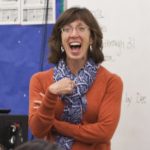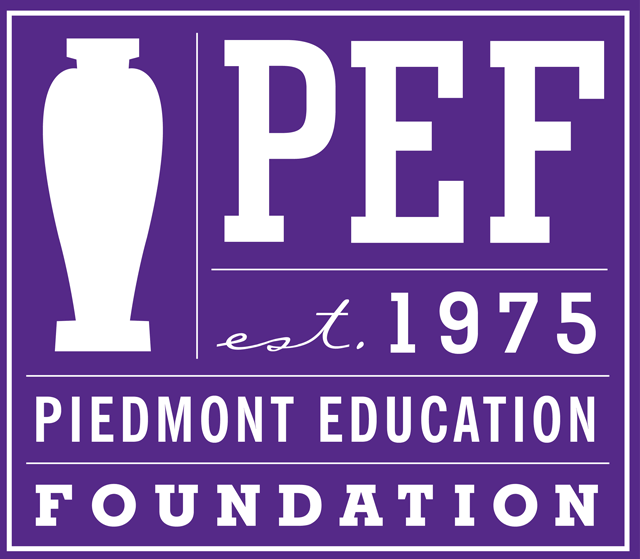Beth Black, teacher at Piedmont High School
PEF: Tell us about your journey to becoming a teacher?
Black: Teaching has always felt very natural for me. I majored in both journalism and education in college and started working in classrooms in my freshman year. I loved the energy. I’ve taught in Piedmont for 20 years.
PEF: What moments of teaching do you cherish most?
Black: It’s those moments when a student gets it – the students who come back, and say “I remembered this from our class” or they made a connection based on the work we did together. Those are the moments I feel most rewarded as an educator.
PEF: What should people know about the work that you and your fellow educators do?
Black: The health, wellness, and growth of all of our students are so important to us. I want to support all my students, both emotionally and academically. I want to make sure I’m teaching them in the best way I can.
PEF: What are your thoughts on the fact that there is no state or federal standard for maximum high school class size, yet Piedmont High School has an average class size of just 28 students?
Black: In other districts, I’ve seen high school class sizes of up to 38 or 40. That number of kids really changes the instruction model – teachers with classes that large have to limit what is assigned, assessed, and turned in, just for the sheer volume. My honors classes are 25 or 26 students, and my AP classes are 24 students. My journalism class has 24 students. We started the year with over 30 kids in some of the senior classes, but Randy (PUSD Superintendent Randall Booker) was very kind, and looked at that number and said the class was too large and created another section. One of our teachers took it on and is teaching 120%, meaning she teaches six classes instead of five.
PEF: How would your work change as a teacher if you had a class as large as some in the districts around us?
Black: If I had 38 or 40 kids? I couldn’t do nearly as much writing instruction or feedback on essays, and I wouldn’t have the time to connect with as many students as I do now.
PEF: How does the school community provide you with support as a teacher?
Black: It’s such a good community here. I can get to know the students and parents on an individual level, and there’s a supportive environment for that. The level of community support and district support here is different than any other school that I’ve ever taught in.
PEF: How do differentiation resources support the work you do?
Black: Amy Symons Burke (PUSD’s differentiation coach) is in our classes, helping all teachers with differentiation. The other support that the district has in place is co-teaching. At the freshman and sophomore level, there is a section of co-taught English where an English teacher, and a special education teacher work together. It really helps kids who need to access information in different ways. We’ve had English, math, and science sections all structured that way.
PEF: How do the librarian and the library connect with your work?
Black: The librarians connect with every student here at the freshman level and it plays a critical role in what I’m teaching. Because of our librarian, every student knows how to do MLA format, check for credible sources and every student knows what plagiarism looks like. She has also made the library very inviting at all times of the day.
PEF: What else do you wish people knew about the work you do?
Black: I sometimes wonder if people know that teaching is a seven day a week job. We work hard. And long. And thoughtfully.
PEF: What drives you to keep teaching?
Black: I keep teaching for the kids. I love witnessing their moments of excitement, and breakthrough, and growth. I had that experience today – I looked over a senior’s college essay for her, and said ‘That’s you. You captured it perfectly.’ I love this place. I love this work. It’s hard work, but I’m dedicated to making this school better everyday.



